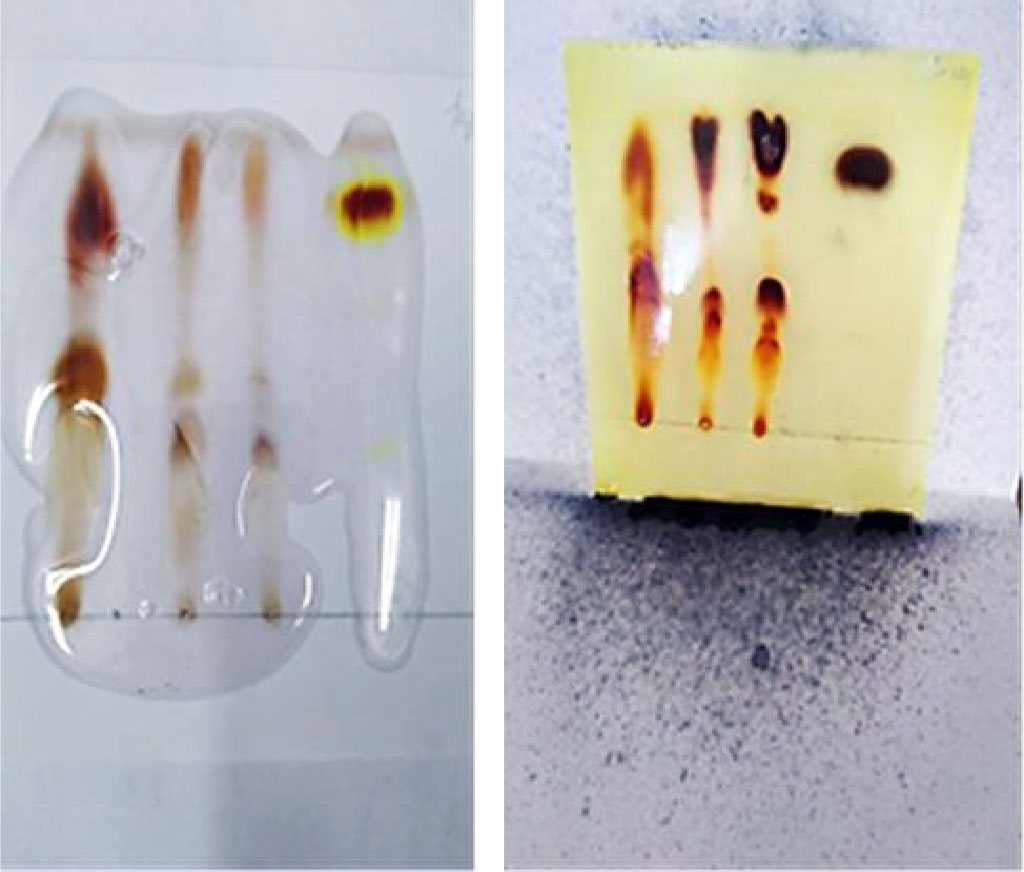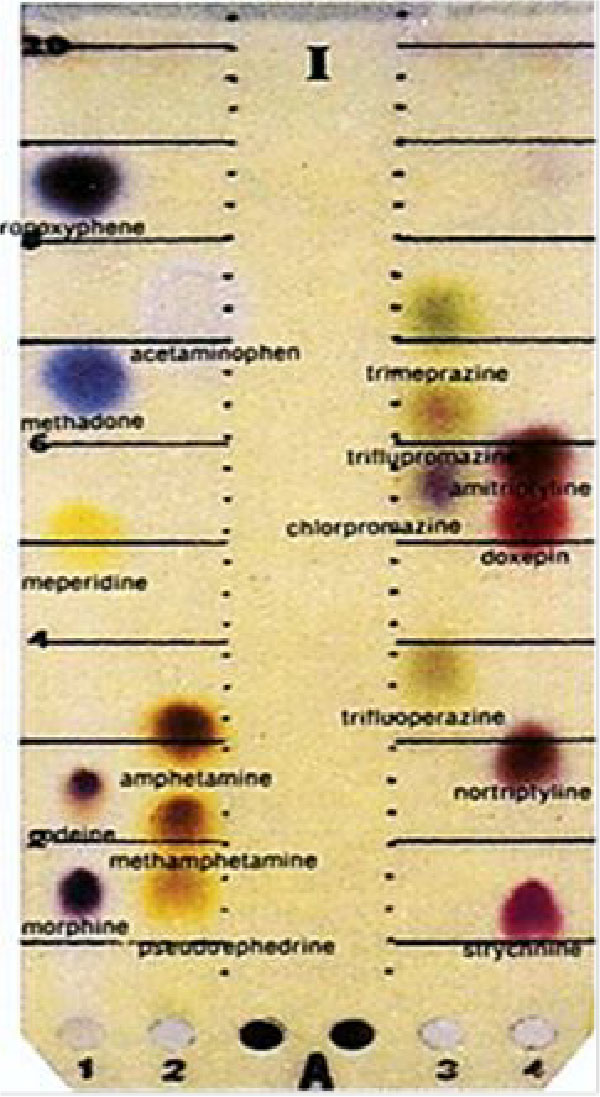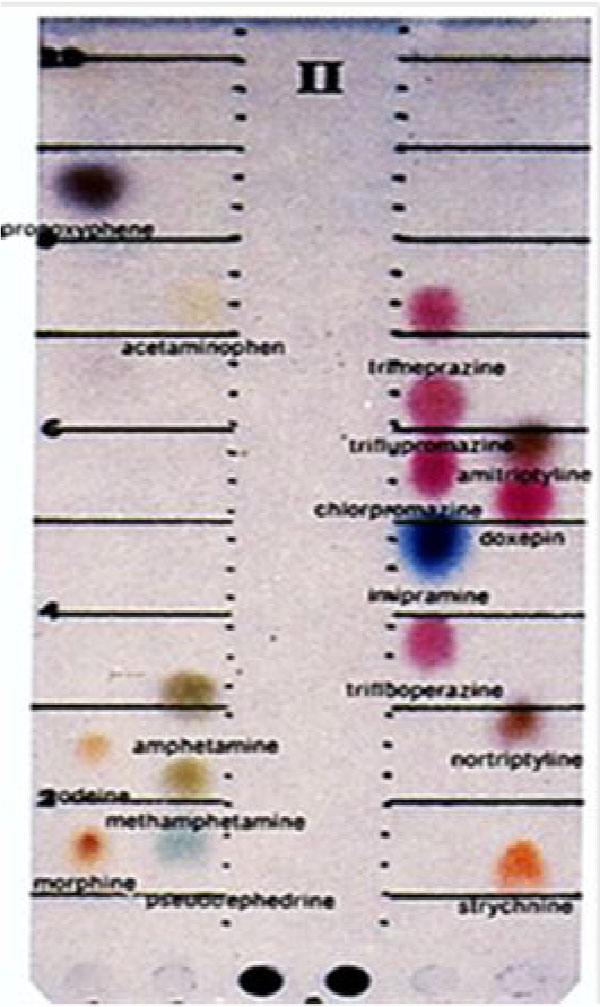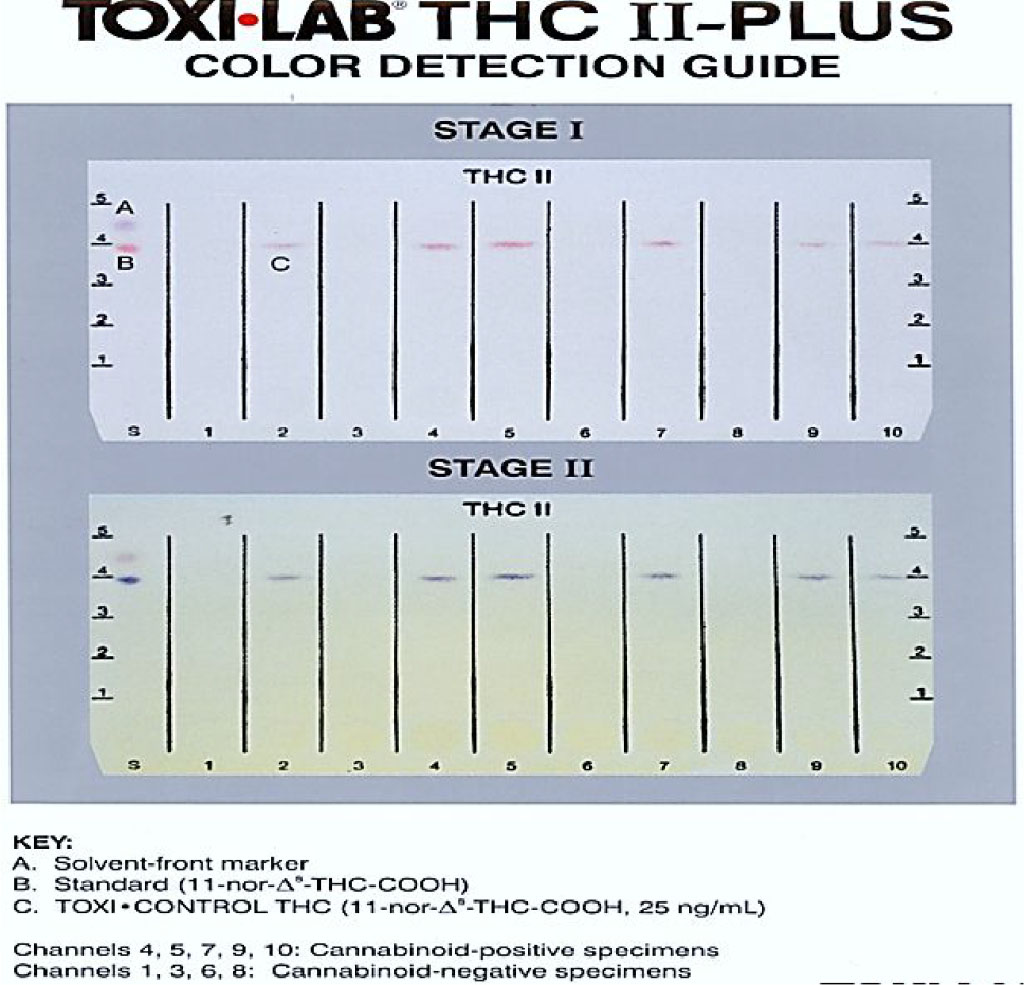- Home
- About the Journal
- Peer Review
- Editorial Board
- For Authors
- Reviewer Recognition
- Archive
- Contact
- Impressum
- EWG e.V.
Cite as: Archiv EuroMedica. 2022. 12; 5: e1. DOI 10.35630/2199-885X/2022/12/5.13
The society nowadays is being exposed to constant high toxicological stress. The expanding range of substances people use in their daily life, a growing drug addiction rate, newly developed highly active medicines, environmental and man-made disasters, the chemicals used to commit acts of terror, the progress of chemically-induced diseases – all these result in a steady increase in the number of poisoning cases. The detection of toxic substances in the body of someone who suffered poisoning is the leading area in diagnosing disease of chemical origin. Apart from clarifying the diagnosis, important is to identify the indications for hospitalization, the choice of the detoxification method, as well as that of the antidote therapy. Given that, chemical and toxicological studies aimed at the detection, identification, and quantification of a wide range of toxic substances in objects of biological origin are relevant and enjoy respective demand.
This paper offers a comparative analysis of preliminary research methods, as well as extraction from internal organs, of biological fluids and physical evidence to be taken into account through chemical and toxicological analysis carried out to detect medicinal, narcotic substances and metabolites thereof. The research objects here were blood, urine, bile, internal organs, brain from human corpses of males and females, aged 21 to 65, with different causes of death, as well as physical evidence (residue of medicines). The results of this study can be used to select methods for detecting toxic substances at the stages of forensic chemical examination.
Keywords: narcotic drugs, medicinal substances, internal organs, biological fluids, analytical toxicology, chromatographic research methods.
As can be seen from the annual reports by the United Nations Office on Drugs and Crime (UNODC) and the European Monitoring Center for Drugs and Drug Addiction (EMCDDA), the world is facing a rapid growth and expansion in illicit trafficking and non-medical use of drugs, psychotropic drugs, all this posing a threat to human health and life, at the same time undermining the moral foundations of society, and is a serious threat to the national security and the economy of whole countries [8,26,27].
The progress in the pharmaceutical industry leads to the creation of new drugs that require newer control methods, which have to possess such features as high accuracy and reliability. The identification of drugs and psychotropic medicinal substances in biological objects allows controlling any criminal actions related to drug trafficking and abuse, as well as contributes to effective diagnostics and treatment of drug addiction [1,4,15,21,29].
The dynamic advance of biochemical analysis methods in modern medicine, enhances the effectiveness of diagnostic measures and applied clinical tasks, which is due to high specificity of biochemical interactions, as well as to possible registering of resulting compounds with extremely low detection thresholds [3,6,10,11,16,17,30].
The main areas of analytical toxicology, which focuses on methods of analytical chemistry in relation to biological objects, include forensic chemical examination, analytical diagnostics of acute poisoning, chemical & toxicological diagnostics of drug addiction, chemical & forensic examination, as well as studying the effect that environmental and industrial toxic substances have on humans [2,5,19,28].
Chemical and toxicological studies have been widely employed to diagnose acute poisoning, narcological examination (alcohol and drug intoxication), doping control (sports), forensic medical examination (identification of lethal poisoning), and in pharmacotherapy (monitoring of drugs used for medical purposes) [9,12,25].
The issue of forensic identification of narcotic and potent drug abuse is being actively developed all over the world, chemical studies being the main source of data in this case. Experts often have to face situations when the suspected poisoning with narcotic drugs and medicinal substances is not confirmed by forensic chemical examination, and of special value is the detection of somatic pathological conditions pointing at drug use. The authors claim that even a single use of a narcotic substance will lead to irreversible change in the genetic information at the cellular level, which can later lead to necrosis, hypertrophy and apoptosis [13,18].
Most of the studies devoted focusing on various issues pertaining to analytical toxicology and forensic science rely on chromatomass spectrometry and tandem mass spectrometry methods. The most common method that helps identify narcotic and psychoactive drugs is gas chromatography-mass spectrometry, which features a number of significant downsides. This does not allow studying new potent substances, thus making pointing at the relevance of combining methods of liquid and gas chromatography-mass spectrometry with newer methods of sampling. The advances in chromatomass spectrometry methods have led to the emergence and spread of a whole number of fields, the most promising of them being high-resolution mass spectrometry [7,20].
Screening of narcotic and potent drugs involves immuno-enzyme and chromatographic methods. However, as far as the combination of performance, rapidity and cost, the thin-layer chromatography method stands out as the most effective [14,24].
The progress in the available analytical tools expands the possibilities for identification and detection of psychoactive and narcotic compounds in plant raw stuff, at the same time reducing the duration and enhancing the reliability and the sensitivity of the procedure. However, the development of synthetic drugs along with the lack of advanced methods and approaches to identifying these compounds has created issues in diagnosing poisoning and, therefore, in treating respective patients. This means that improved chemical and toxicological diagnostics is an urgent task faced by laboratory diagnostics and clinical toxicology.
Aim of study – to analyze preliminary research methods, as well as extraction methods employed when working with internal organs, biological fluids and physical evidence to carry out chemical and toxicological analysis seeking to detect medicinal and narcotic substances.
The objects for the study came from various areas of the Stavropol Region. Over 500 samples of internal organs and biological fluids were studied, which were obtained from both living persons (bio-liquids) and corpses (bio-liquids and internal organs).
As far as research objects within this work are concerned, the following were used: blood, urine, bile, internal organs, brain from bodies (both males and females, aged 21-65; different death causes), as well as physical evidence (residue of drugs).
While forensic chemical examinations with internal organs were performed, the following extraction methods were used: extraction and sorption when isolating medicinal substances from biological material relying on the Stas-Otto method; the Vasilieva, Kramarenko, Valova method; chromatographic research methods [22,23].
Chromatogram processing, which was dome to identify the sample components, was done with the AMDIS software (The Automatic Mass Spectral Deconvolution and Identification System, NIST).
The choice of the isolation method is an important step in performing a chemical study aimed at detection of medicinal and narcotic substances. The most important stage is sample preparation, and an incorrectly selected isolation method may lead to partial, and sometimes even complete, loss of the analyzed substances. When selecting the isolation method, it is important to take into account the metabolism of the analyzed drugs.
Following the visual selection of the incoming biomaterial, the extraction method was selected, and then, after the first preliminary stages of the study, all negative samples were dismissed.
Positive samples were used further employing different methods of detecting medicinal and narcotic substances, while the sequence of the methods was changed. Table 1 offers details of preparing biological samples for analysis.
Table 1. Standards for sampling bio-objects for examination
| Sample | Amount | Analysis details |
| Blood (heart) | 50-100 ml | Always |
| Blood peripheral system | 1-25 ml | At full toxicological examination |
| Urine | All | Always |
| Bile | All | Always |
| Stomach contents | All | At full toxicological examination; at poisoning with unidentified substance |
| Liver | 100 g | Always |
| Kidney | 100 g | Always |
| Brain, fat tissues | 50 g | Lipophilic drugs |
| Lungs | 100 g | Volatile poisons |
| Hair | lock | Medicines, drugs, metals |
All the data obtained through comparing various indicators (specificity, sensitivity, labor consumption, etc.) of the research methods used are presented in Table 2.
Table 2. Comparative analysis of methods employed through the study
| Method | Identification | |||||
| Specificity | Sensitivity | Possible analysis of mixture | Qualitative analysis | Quantitative analysis | Labor consumption | |
| Staining reactions | + | + | Yes | + | Sometimes | + |
| UV-visible (Spectrophotometry in ultraviolet and visible regions) | + | + | No | +++ | Yes | ++ |
| ICM (Immunochemical method) | ++ | ++ | Sometimes | No | Sometimes | + |
| GLC (gas-liquid chromatography) | ++ | ++ | Yes | ++ | Yes | ++ |
| HPLC (high performance liquid chromatography) | ++ | ++ | Yes | ++ | Yes | ++ |
| TLC (thin layer chromatography) | ++ | + | Yes | ++ | No | +++ |
| GC-MS (gas chromatography and mass spectrometry) | ++++ | ++++ | Yes | ++++ | Yes | +++ |
| ICP-MS (Inductively Coupled Plasma and Mass Spectrometry) | ++++ | ++++ | Yes | ++++ | ++++ | ++++ |
| AAS (Atomic Absorption Spectroscopy) | +++ | +++ | No | ++ | ++++ | +++ |
Depending on the object that was processed, the extraction process was divided into solid-liquid and extraction in a liquid-liquid system. In case of solid-liquid systems, organic solvents were used – chloroform, ether. Specific isolation methods (for one substance or group) and general methods (study per several groups of substances) were employed through the work. When working with putrefactive material, the extraction process took longer than 7 days.
The analysis included the thin-layer chromatography method, where the choice of a solvent system is of great importance. Various solvent systems were used in the comparative analysis study. Based on the dilution coefficients, optimal solvent systems for specific screening were selected (e.g. cyclohexane (5:1); chloroform:ethanol (20:1); chloroform:butanol: 25% ammonia solution (70:40:5); cyclohexane: acetone (5:1); for general screening (acetone: chloroform (1:9); toluene: acetone:ethanol:ammonia (18:18:3:1).
When detecting certain groups of substances, while using the thin-layer chromatography method, it is reasonable to use specific solvent systems shown in Table 3.
Table 3. Specific solvent systems
| Acidic, neutral and weakly basic compounds | Compounds of basic, neutral and weakly basic nature |
| Acetone:Cyclohexane (5:1) | Chloroform:ethanol (20:1) |
| Chloroform:butanol:25% ammonia solution (70:40:5) | Cyclohexane: acetone (5:1) |
There were methods selected for detecting groups of medicinal and narcotic substances in general and specific screening conditions, which allowed detecting substances in urine with concentrations matching therapeutic doses.
Figure 1 shows the plates following their treatment with the Marquis agent, Dragendorff's agent modified by Munier and iron chloride (III).

Figure 1. Thin-layer chromatography after treatment with Marquis agent, Dragendorff's agent modified by Munier and iron chloride (III).
TOXILAB thin-layer chromatography system. When controlling the detection of standard and test samples, notable was the appearance of pseudoephedrine – a yellow spot whose formation time was 5-10 seconds; a green center – up to 60 seconds. In the second stage – imilramine: a blue spot developing after 1-2 rinses with water. In the third stage – pseudoephedrine: a fluorescent blue spot; imilramine: a dark green spot. At the fourth stage – caffeine: a gray spot.
The TOXI-LAB TCH ll system for detecting narcotic substances belonging to the cannabinoid group. To detect the substances in question, the plate was immersed once in Solid Blue BB to be further dried. The plate was immersed in the TCH-2 (diethylamine vapor) reagent for up to 10 seconds and then compared with the standard. The plate was immersed in hydrochloric acid for 5-10 seconds, to be further compared with the standard.
Figures 2 and 3 show the plates after acid treatment, and then rinsing with water.

Figure 2. Treatment with sulfuric acid

Figure 3. Rinsing with water
Figure 4 shows the plates after the manifestation and detection of narcotic substances belonging to the cannabinoid group.

Figure 4. Detection of narcotic substances of the cannabinoid group
Mandatory examination of biological fluids by the IHA method, examining the substances for volatile impurities (important because they are often used in case of using many narcotic substances), then the thin-layer chromatography method (depending on the objects of study), as a preliminary method, the next stage being the selection of the extraction method. In parallel, a study was conducted to check any presence of alcohols; if there was no urine, then an ELISA test was done with the bioliquid – blood, and further all positive samples were selected for the next stage – the confirming methods.
A comparative extraction efficiency evaluation was carried out for the analyzed compounds while employing various isolation methods. Liquid-liquid extraction was found to be the best isolation option with the highest yield of analytes. The liquid-liquid extraction-based methodology was proven acceptable relying on the example of real urine samples analysis for a case of opiate poisoning, whereas the identification error did to exceed 7%.